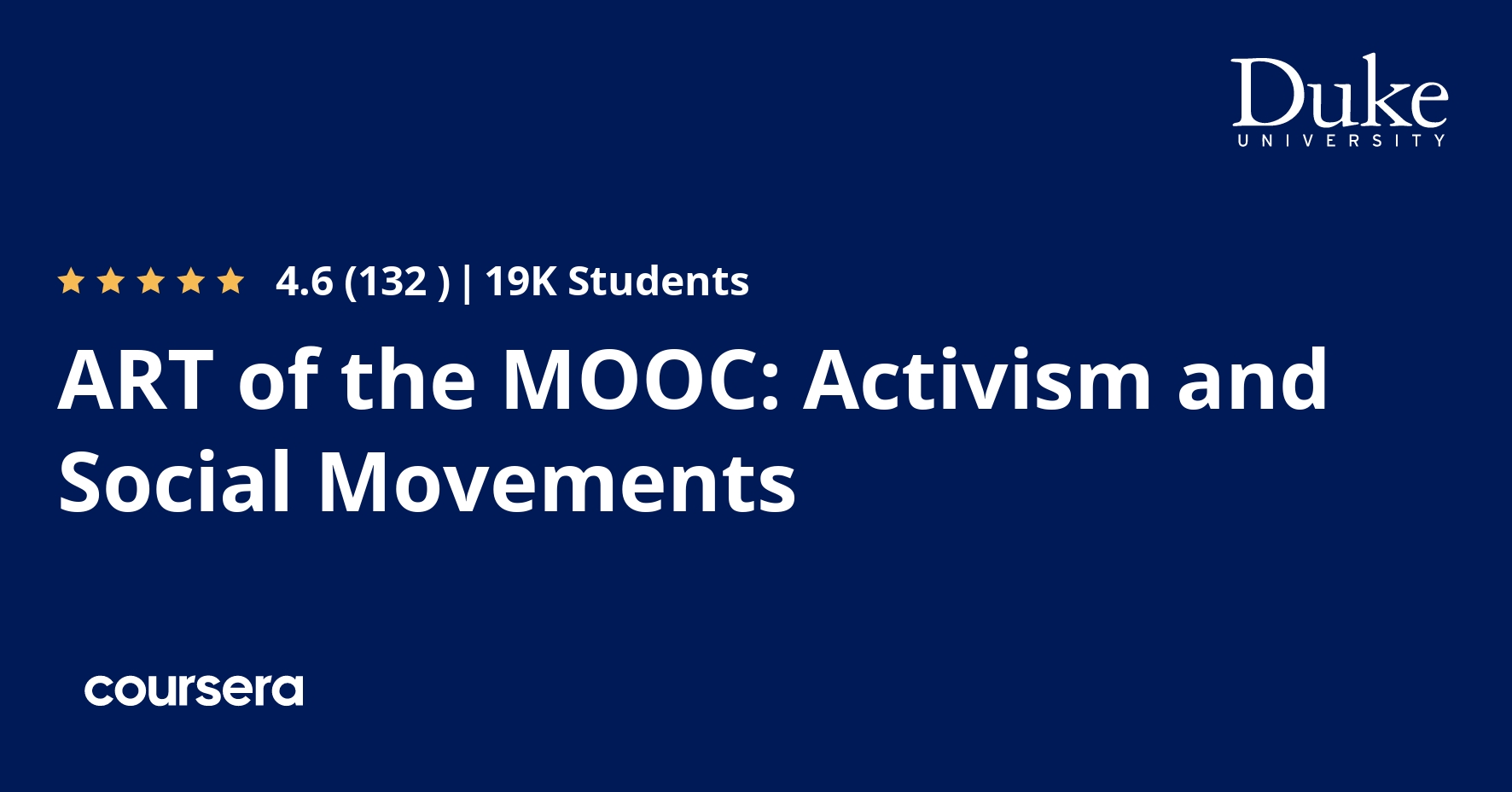Description
This course is for activists, artists, and thinkers who wish to better understand and participate in social change. We will focus on the prolific and exciting overlap between socially engaged art and cultural practices generated by recent social movements around the world. Rather than assess the political efficacy of activities like mourning, listening, organizing, dancing, or partying, the lectures examine such cultural activities next to, and within, contemporary art practice.
Included in the course are guest presentations by key artists, activists, and scholars, like: Rebecca Gomperts, Chido Govera, Gulf Labor, Hans Haacke, Sharon Hayes, Jolene Rickard, Gregory Sholette, Joshua Wong, and many more. Designed by artist and Duke professor, Pedro Lasch and co-taught by Creative Time artistic director, Nato Thompson, the course challenges learners to treat the MOOC itself as a social and artistic form. This happens mostly through the practical components, local project productions, global exchanges, and critical feedback.
While no prior art making or activist experience is required, projects also offer challenging options for advanced learners.
For other course offerings or language versions in this series, just search ‘ART of the MOOC’ inside the Coursera course catalogue.
What you will learn
Introduction to Activism and Social Movements
This short module includes an overview of the course’s structure, working process, global community, and overall guidelines. Make sure to read it right away and refer back to it whenever needed.
Activism and Social Movements: Lectures, Guest Presentations, and Quiz
This opening segment is dedicated to the prolific and exciting overlap between socially engaged art and cultural practices generated by recent social movements around the world. Environmentalism, AIDS activism, Queer movements, Zapatismo, immigrant rallies, alter-globalization, the World Social Forum, Occupy, the Hong Kong Umbrella Movement, museum boycotts, and democratic uprisings in the Middle East will be seen in dialogue with cultural producers who participate in these movements or are inspired by them. Rather than assess the political efficacy of such cultural activities, we will examine their place within contemporary art practices. Based on Listening, Organizing, Dancing, or Partying, each student’s contribution will respond to a particular social movement of their choosing.
Activism and Social Movements: Project and Peer Review
The prompt, lecture and guest presentations will provide the foundation and inspiration for students’ own experiments. These student experiments were originally peer reviewed projects in the ART of the MOOC series, but have now been made entirely optional and self-reviewed. If you want to do them, we recommend you chose one of the two options (one is more social, the other more individual) and complete the optional quiz after you are done. Your project submissions and the quiz are not graded, so they will not impact your performance in the course.
Aesthetics, Art History, and Cultural Institutions – Lectures, Guest Presentations, and Quiz
Just as recent social movements have transformed contemporary art and culture, activists have relied on ideas developed in more specialized cultural circles, sometimes without knowing it. Starting with an exploration of the ways in which socially engaged public art has been included and excluded from particular narratives, theories, institutions, and events, we will use this lesson to follow social practices as they question conventional art and art history. As we do so, students will be invited to create projects that directly engage with Cultivating, Farming, Cooking, or Eating—activities that are fundamentally social but traditionally seen to contradict serious artistic production.







